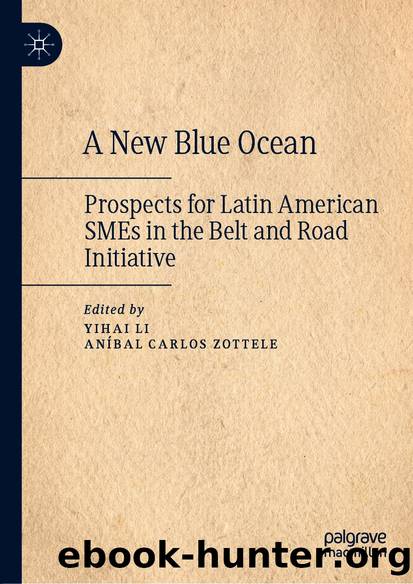A New Blue Ocean by unknow

Author:unknow
Language: eng
Format: epub
ISBN: 9789811576874
Publisher: Springer Singapore
6.2 Macroeconomic Evolution of Brazil (2002â2015)
At the beginning of the new millennium, it is plausible to observe in Brazil a new cycle of economic expansion characterized by a pattern of high and sustainable growth, different from that prevailing between 1980 and 1999, when growth was modest and unstable. These changes were the result of a number of factors, including a strong increase in exports coupled with a favorable international context, the expansion of the domestic marketâa product of the Lula governmentâs social and income policiesâand the maintenance of a stable macroeconomic framework, which had the merit of ensuring a political transition without major disruptions, preserving the expectations of the economic agents (Kupfer et al. 2009).
During the first years of the 2000s, Brazil experienced a climate of uncertainties, mainly linked to the unfavorable evolution of several economic variables and doubts regarding the countryâs political course in the context of an electoral dispute. The economic problems of 2002, marked by inflationary acceleration and high levels of external debt, were intensified by the crisis of mistrust generated from the prospect of an electoral victory by the Workersâ Party. The uncertainty surrounding what would happen from 2003 with the inauguration of the new government increased investor fears and deepened the deterioration of the main economic variables. Country risk reached more than 2000 basis points in October 2002, after sitting at just over 700 points in March of that year. The exchange rate went from R$ 2.32 in March to R$ 3.05 at the end of September (see Fig. 6.6). Finally, the expectations of inflation for 2003 increased considerably from September. It was in this precarious context that Luiz Inácio Lula da Silva assumed the presidency.
Under the process of transformations in Workerâs Party thinking and political formulations, a process marked throughout the electoral campaign, the Lula governmentâs economic policy (2003â2010) were based on the commitment to maintain the stability achieved during the governments of Fernando Henrique Cardoso (1995â2002). In the restrictive scenario of the beginning of 2003, the first step in Lulaâs economic policy was to establish a sound macroeconomic adjustment to regain control of the countryâs monetary, fiscal, and exchange rate situation. In the context of monetary policy, the government revised upwards the inflation targets set by the previous government to accommodate the inflationary impact of the exchange rate depreciation that occurred in 2002. In parallel, to ensure the fall in inflation, the Central Bank increased the Selic rate to 26.5% in February 2003 (see Fig. 6.2). In the fiscal field, the government increased the primary public sector target of 3.75% of GDP to 4.25% of GDP (Barbosa and Souza 2010: 3).
Throughout 2003, the new governmentâs fiscal and monetary orthodoxy meant a slowdown in economic growth to 1% (see Fig. 6.1), but it collected good results in terms of fighting inflation (see Fig. 6.3). However, the exchange rate depreciation, coupled with a recovering growth of the world economy, gave a significant boost to the Brazilian export sector (see Fig. 6.5). Progressively during the first
Download
This site does not store any files on its server. We only index and link to content provided by other sites. Please contact the content providers to delete copyright contents if any and email us, we'll remove relevant links or contents immediately.
International Integration of the Brazilian Economy by Elias C. Grivoyannis(57311)
The Radium Girls by Kate Moore(10906)
Turbulence by E. J. Noyes(7037)
Nudge - Improving Decisions about Health, Wealth, and Happiness by Thaler Sunstein(6633)
The Black Swan by Nassim Nicholas Taleb(6190)
Pioneering Portfolio Management by David F. Swensen(5604)
Rich Dad Poor Dad by Robert T. Kiyosaki(5147)
Zero to One by Peter Thiel(4823)
Man-made Catastrophes and Risk Information Concealment by Dmitry Chernov & Didier Sornette(4734)
Secrecy World by Jake Bernstein(3782)
Millionaire: The Philanderer, Gambler, and Duelist Who Invented Modern Finance by Janet Gleeson(3568)
Skin in the Game by Nassim Nicholas Taleb(3459)
The Age of Surveillance Capitalism by Shoshana Zuboff(3420)
The Money Culture by Michael Lewis(3283)
Skin in the Game: Hidden Asymmetries in Daily Life by Nassim Nicholas Taleb(3263)
Bullshit Jobs by David Graeber(3178)
The Dhandho Investor by Mohnish Pabrai(3167)
The Wisdom of Finance by Mihir Desai(3077)
Blockchain Basics by Daniel Drescher(2888)
